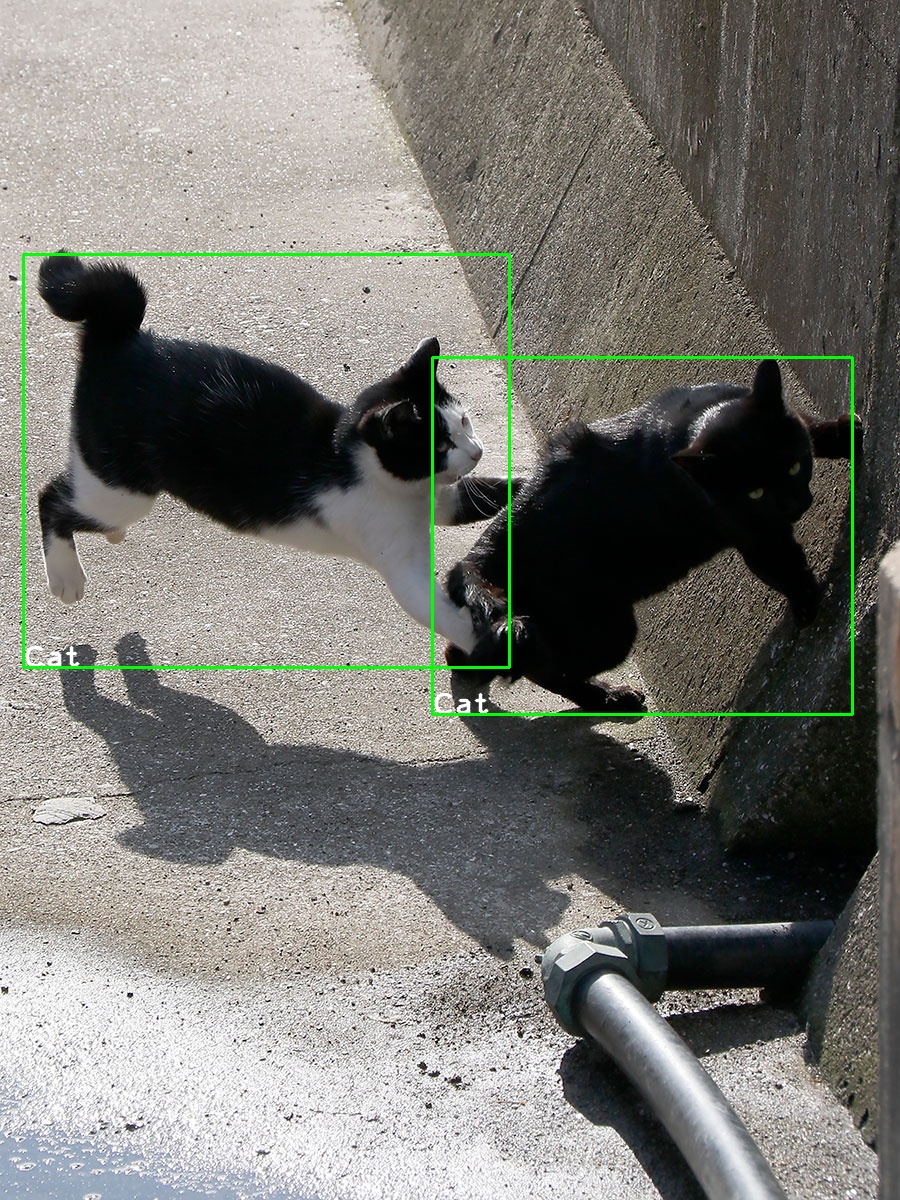python Amazon Rekognition detect_labelsその2
※若干プログラムを修正しました。
はじめに
Amazon Rekognitionで分析した画像にBoundingBoxとラベルを表示させてみる。
準備
事前に下記の画像をAmazon Rekognitionで分析させてJsonファイルを取得しておく。

下記のプログラムを用意する。
- detect_labels.py
import boto3, sys, json, cv2, math, os, traceback #detect_labelsで画像の分析結果を返す def detect_labels(in_image_file): client=boto3.client('rekognition') #写真を読み出して、Byte変換して送信 file = open(in_image_file,'rb') response = client.detect_labels(Image={'Bytes':file.read()}, MaxLabels=30) return response #BoundingBoxを設定して返す def set_bounding_box(image_file, label_name, instances): #画像の高さと幅を取得 imgHeight, imgWidth = image_file.shape[:2] for instance in instances: left = math.ceil(instance['BoundingBox']['Left'] * imgWidth) top = math.ceil(instance['BoundingBox']['Top'] * imgHeight) width = math.ceil(instance['BoundingBox']['Width'] * imgWidth) height = math.ceil(instance['BoundingBox']['Height'] * imgHeight) image_file = cv2.putText(image_file , label_name , (left, height+top) , cv2.FONT_HERSHEY_PLAIN , 2 , (255, 255, 255) , 2 , cv2.LINE_AA) image_file = cv2.rectangle(image_file , (left, top) , (width+left, height+top) , (0,255,0) , 2) return image_file if __name__ == '__main__': if len(sys.argv) != 3: exit() in_file_name = sys.argv[1] out_file_name = sys.argv[2] try: #jsonが無ければ分析あれば使う json_file_name = in_file_name + '.json' if (os.path.exists(json_file_name) == True): file = open(json_file_name, 'r') response = file.read() response = json.loads(response) else: response = detect_labels(in_file_name) file = open(json_file_name, 'w') file.write(json.dumps(response)) #分析元の画像を読み込み origin_image = cv2.imread(in_file_name) after_image = origin_image.copy() #画像にBounding Boxの設定 for label in response['Labels']: #信頼が90未満の場合設定しない if label['Confidence'] < 90: continue #Instancesが無い場合は設定しない if not label['Instances']: continue after_image = set_bounding_box(after_image, label['Name'], label['Instances']) #結果の出力 if after_image is not None: cv2.imwrite(out_file_name, after_image) except Exception as e: print(e) print(traceback.format_exc())
実行方法
python boundingBox.py bef.jpg aft.jpg
実行結果
Bounding Boxを付与したイメージが以下となる。

if labelName != 'Cat'をしている理由は別の画像だとCatとDogが混じっていることがあるのでCatに限定した。
本来はConfidenceの高い方を優先するロジックのほうが良さそう。
また、CV2は小数点が使えない感じだったので、math.ceilで切り上げをしている。
追記:Confidenceが90以上のlabelを採用し、Instancesが無いものは設定対象外とした。
まとめ
せっかくBounding Boxがあるので表示してみた。
CV2の使い方もわかって面白い。